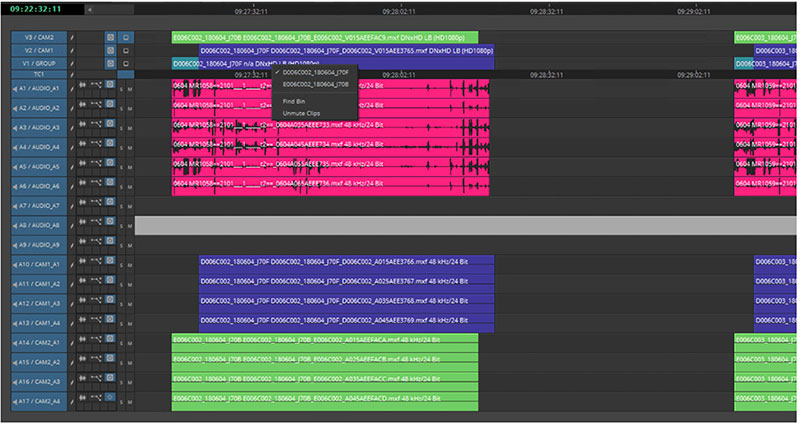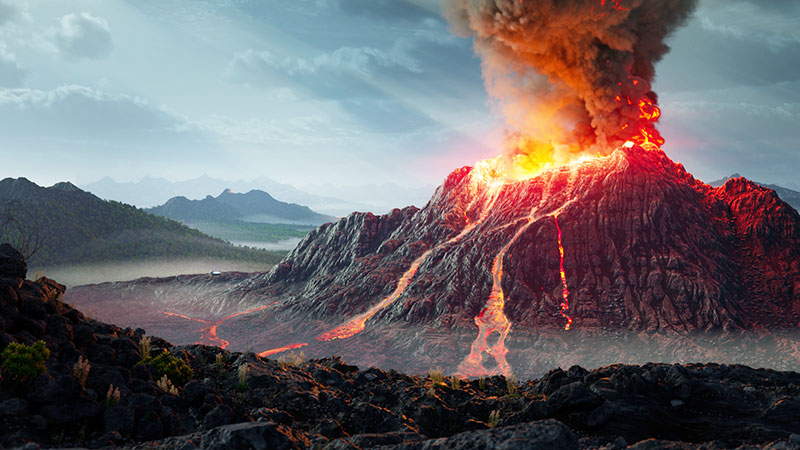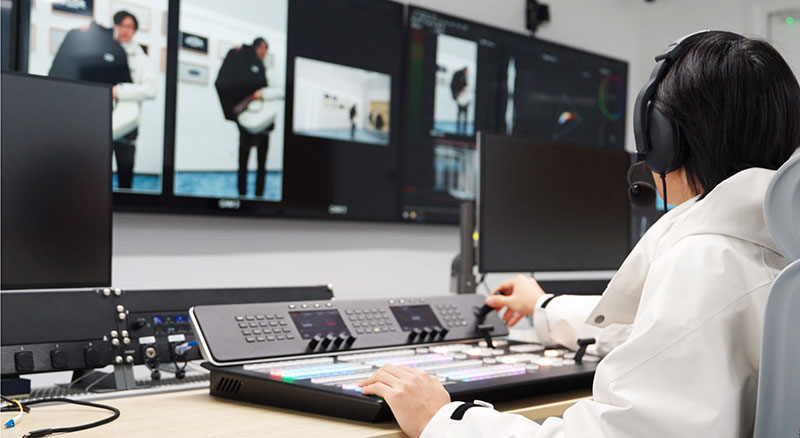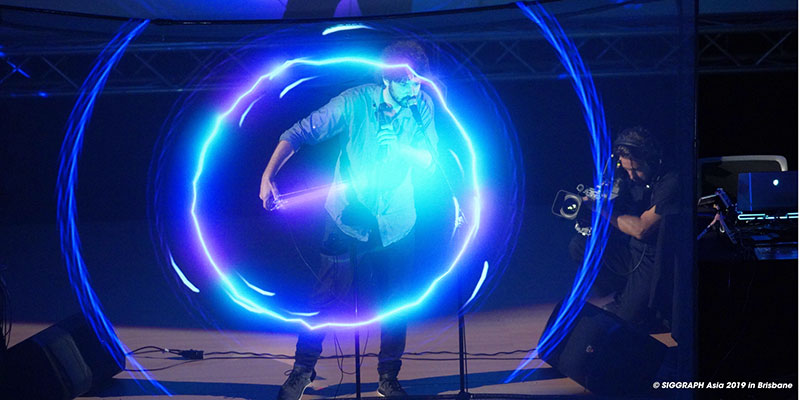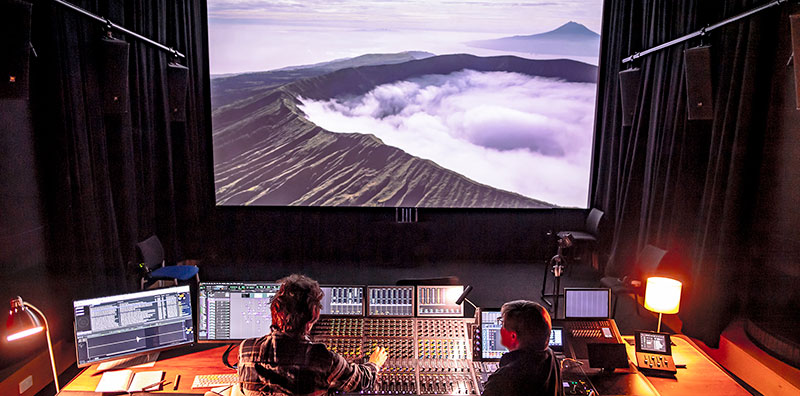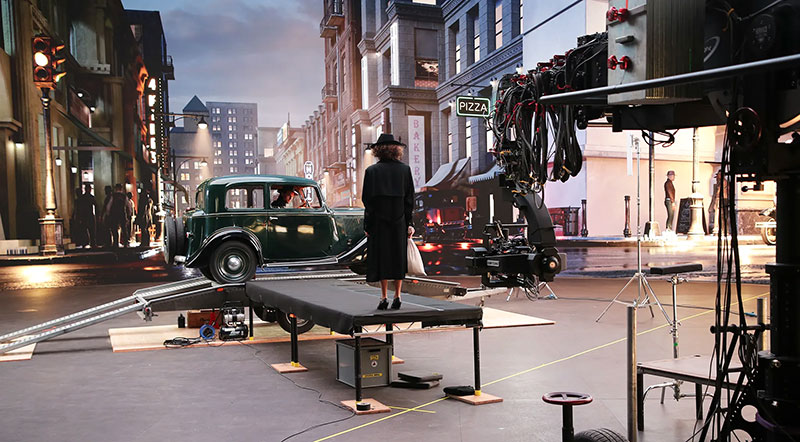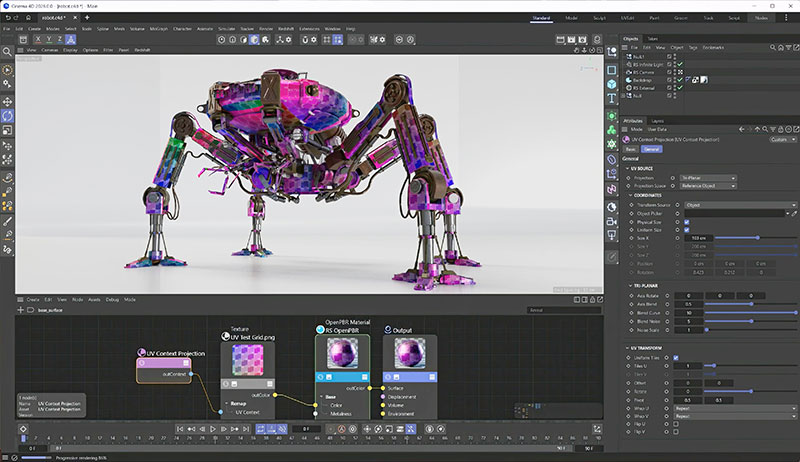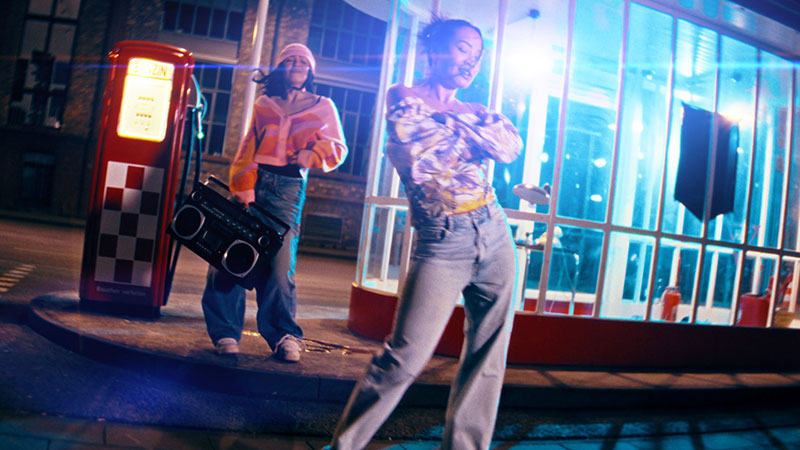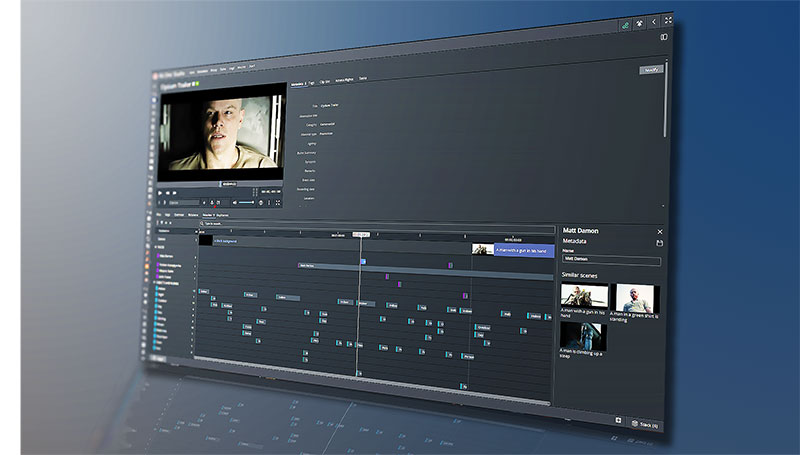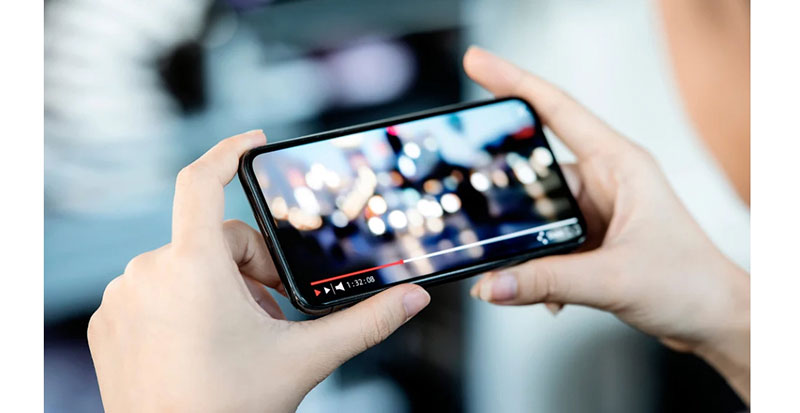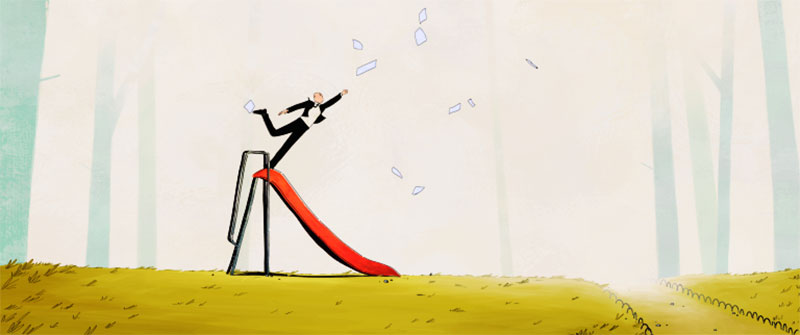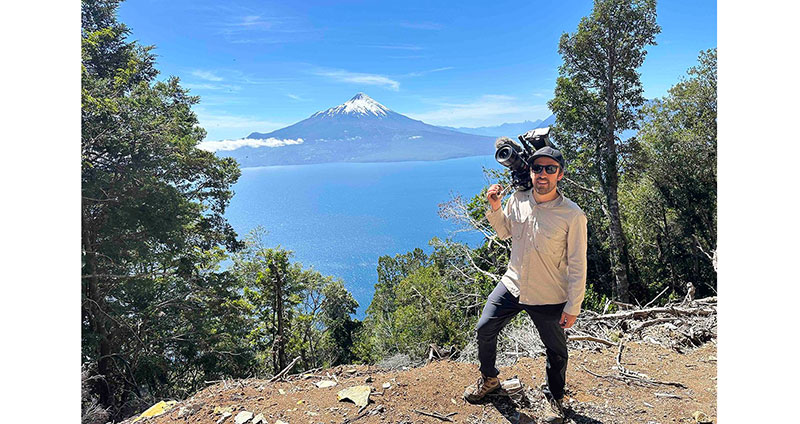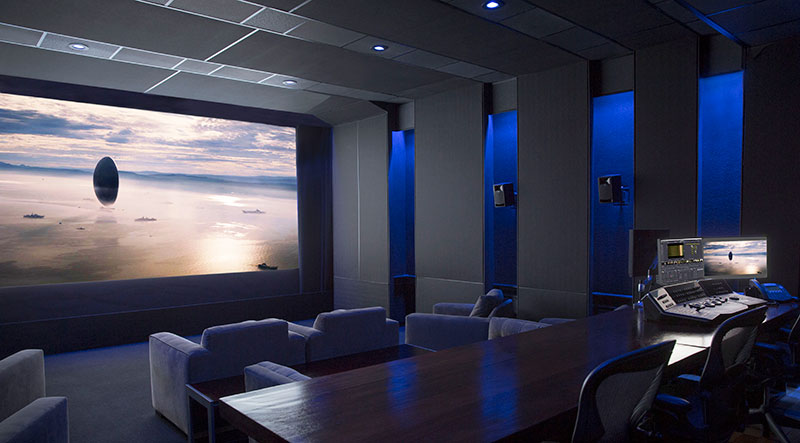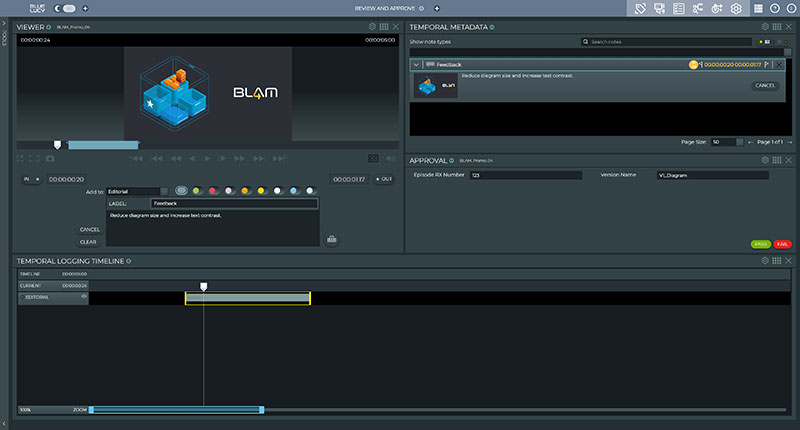FilmLight REMOTE, dedicated software for remote colour grading gives post teams the infrastructure to work remotely without sacrificing the high-quality, low-latency monitoring needed for efficient workflows.
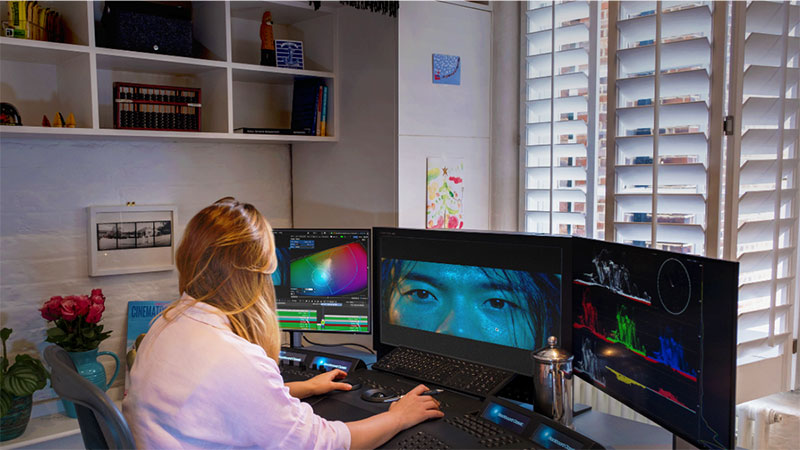
FilmLight REMOTE is a new purpose-built system for remote colour grading. It gives post-houses and colourists the infrastructure to work remotely without sacrificing the high-quality, low-latency monitoring that is essential for fast and efficient workflows. Following an extensive beta programme, FilmLight REMOTE with integrated JPEG-XS is available now as part of Baselight 6.0.
“The demand for working remotely on post production projects has continued to grow – for dailies, editing, VFX and finishing,” said Martin Tlaskal, Head of Development at FilmLight. “But the world of colour correction has its own particular challenges. Earlier remote tools have had a limited ability to drive both the colour grading control surfaces and the monitoring of high-quality images with low latency. FilmLight REMOTE addresses these issues as a complete remote grading solution that does not impact quality or speed.”
Two Scenarios
FilmLight REMOTE is able to integrate hardware including a FilmLight control surface, monitors displaying the user interface, mouse and keyboard, with professional monitoring over the internet. The Baselight or Daylight software can run via HP Anyware or Amazon DCV to supply the remote end where the colourist is working with multiple UI monitors up to 4K. At the same time, an SRT video connection is established to deliver a high-quality video stream – supporting JPEG-XS and H265 codecs – to the remote system, where the FilmLight desk service can also supply support for the Slate, Blackboard Classic or Blackboard 2 control panels.
See the diagram -
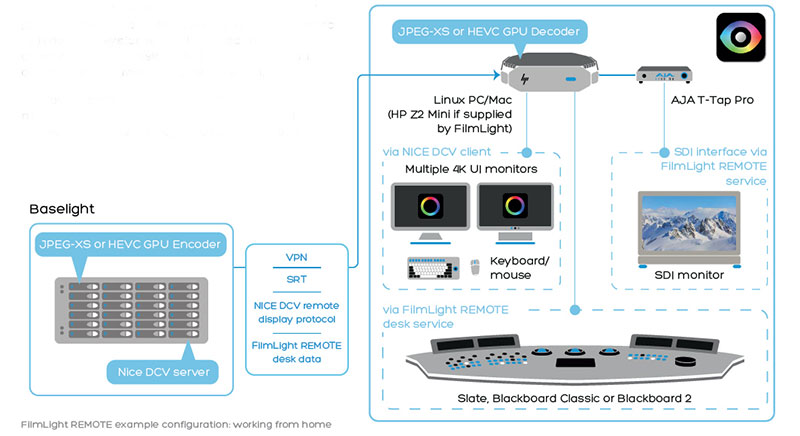
At the remote end of the network, as well as Baselight version 6.0, the workflow needs certain types of hardware. The JPEG-XS/HEVC image stream can be decoded by a Linux workstation with NVIDIA Quadro GPU running the REMOTE software and an AJA or Blackmagic Design SDI output card, or an AJA T-TAP
Pro if Thunderbolt is available. In this case of a Linux PC system, FilmLight can supply two different pre-configured options, with FilmLight REMOTE software, GPU and network interface installed.
Because a thin-client system can be used to stream the UI from the Baselight or Daylight system, and handle the control surfaces, REMOTE also supports facilities that want to host equipment off premise, for instance, in a data centre or in the cloud. The video stream is received by the thin-client, or the FilmLight REMOTE server, which can be used to receive up to four UltraHD video streams – converting them to SDI to interface with existing SDI routing infrastructure. See the diagram below.
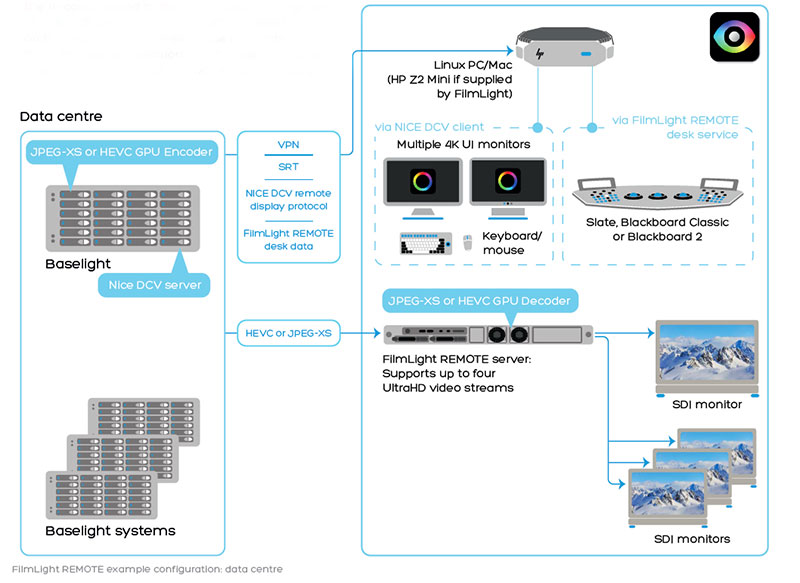
This ability also means that FilmLight REMOTE makes it possible to work directly from home or other remote sites, without the user having to acquire extra hardware encoders or decoders.
JPEG-XS is chosen here mainly for its very low latency and also for its visual losslessness at compression ratios between 2:1 and 12:1 for 4:4:4 and 4:2:2 up to 8K 60P. It is useful for applications that normally require uncompressed image data transport – like viewing colour corrected images - while all processing occurs on the uncompressed material. FilmLight’s integration of JPEG-XS happens directly on the GPU that is handling the grading operation to minimise latency.
FilmLight Support
The expertise of FilmLight’s support team is also an important element of using REMOTE. UNIT TV was part of the beta programme and recently added REMOTE to the complex new workflow they have set up in London, which includes some unusual approaches to post. Founder and CEO of UNIT TV Adam Luckwell said, “The depth and breadth of knowledge available from Filmlight’s support, along with their can-do attitude, mirrored that of our own engineers. Both teams worked together to solve initial problems and develop a brilliant fully remote solution that has kept our artists happy and focussed on their creative output.”
Coffee & TV in London was also part of the REMOTE beta programme. Their Baselight is now located off-premise in a data centre, and is used regularly by running REMOTE to colourist workstations. “The highest compliment we can give is that you’d never know the Baselight wasn’t in the building – it works as if it were installed locally,” said Lewis Crossfield, Senior Colourist at Coffee & TV. www.filmlight.ltd.uk
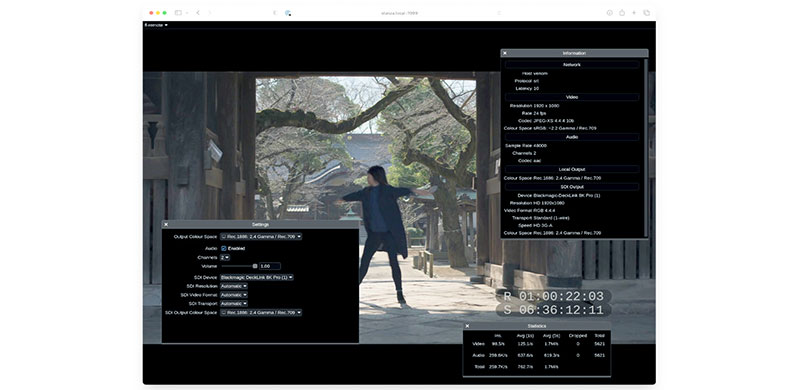 FilmLight REMOTE configuration Web UI
FilmLight REMOTE configuration Web UI




